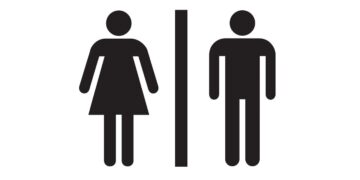
A hoard of 1,000-year-old early medieval silver coins and a rare brooch and pin unearthed by two men using metal detectors in the Eden Valley have formally been declared treasure.
Four complete silver hammered pennies and two cut half pennies were found by one man at an unspecified location in the district during January, 2022.
In June this year, the incomplete silver medieval annular brooch with pin was located by another man using a metal detector in the parish of Hoff, near Appleby.
Details of such archaeological finds are provided to the British Museum and logged by the Portable Antiquities Scheme which it manages.
Curators make requests and recommendations to coroners if they believe items meet the legal criteria to be declared treasure — namely if they are at least 300 years old, have a precious metal content of at least 10 per cent and, in the case of coins, where there are more than two of them.
A curator’s report on the brooch stated that it dates to the medieval period between 1200 and 1400AD. Its diameter dimensions are a maximum of 15.5mm and minimum of 13mm with a thickness of 2mm. The pin is 13.55mm long and 3mm wide where it links to a frame with a weight of 0.61 grams.
Area coroner Kirsty Gomersal, reading from the curator’s report, noted: “There are not many direct parallels on the PAS database, the artefact under discussion being of particularly fine workmanship.”
The brooch, she learned, was formed of “silver wire wrapped around a central silver wire frame in an unusually detailed and elaborate form”.
Penrith museum staff are said to be interested in acquiring the item.
A separate inquest was told the six early medieval silver hammered coins dated back to the reign of King Ethelred II of England between 978 to 1016AD.
Five different known mints were represented and descriptions, measurements and weights of each coin were documented.
“The British Museum states that coins of the types were produced in large quantities during the late 10th Century at a time when Viking attacks on England were dramatically escalating; a period which culminated in the conquest of England by the Danish king,” said Ms Gomersal.
From 991 onwards, historically documented payments had been made by the English to Viking armies.
Other undocumented payments and seizures had also been made during this period, and significant quantities of coins of these types had been recovered from hoards in England and Scandinavia.
“The find was made in an (Eden Valley) area of known Scandinavian settlement in the vicinity of the main trans-Pennine route that connected York to the Irish Sea. It is possible, given the wider context and location of the find, that the hoard represented the loss — or burial for safe keeping — of a portion of the direct proceeds of Viking activity in England,” a curator’s report stated.
“It may however also simply reflect the volume of coinage that was produced and which entered circulation at this time.”
Ms Gomersal concluded after considering all evidence that both items should be formally classed as treasure, and congratulated the respective finders.































